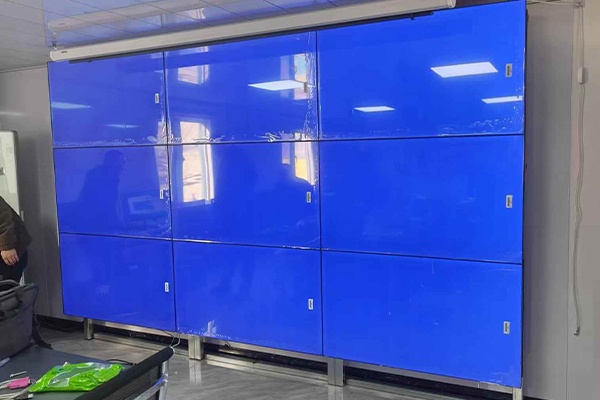Precautions for installing LCD splicing screen
Precautions for Installing LCD Splicing Screen

1. Selection of the installation ground for the LCD splicing screen
The installation surface of the LCD splicing screen should be flat, because the entire system of the LCD splicing screen is relatively large in both volume and weight. The selected surface also needs to have a certain ability to bear weight. If the wall is tiled, it may not be able to bear its weight. Another point is that the installation surface must be anti-static.
2. Precautions for LCD splicing screen wiring
When installing the LCD splicing screen, pay attention to distinguishing its power line and signal line during wiring, and install them in different places to avoid interference. In addition, according to the size and installation location of the screen of the entire project, calculate the length and specifications of various lines required, and calculate the needs of the entire project.
3. LCD splicing screen ambient light requirements
Although the brightness of the LCD splicing screen is very high, it is still limited after all, so the light around the installation environment should not be too strong. If it is too strong, you may not be able to see the picture on the screen. If necessary, the light that may enter near the screen (such as windows) should be blocked. At the same time, it is best to turn off the light when the device is running to ensure the normal operation of the device. Do not install a light directly in front of the screen, just install a canister light.
4. Requirements for LCD splicing screen frame
In order to facilitate the maintenance of LCD splicing screen in the future, the frame edge must be detachable. The inner edge of the outer frame is reserved for about 25mm on each side from the outer edge of the splicing wall. Large splicing walls should also increase the margin appropriately according to the number of columns. In addition, in order to enter the cabinet for maintenance later, the maintenance channel should be no less than 1.2m wide in principle. The detachable edge strip should press the edge of the screen by 3-5mm. After the cabinet and screen are fully installed, the detachable edge strip should be fixed at last.
At the construction site of LCD splicing, installation and debugging should judge the cause according to the phenomenon reflected by the fault. It is necessary to focus on checking the synchronization interface and transmission cable of the equipment, as well as comparing the synchronization frequency range of the signal source and the display terminal.
If the image has double images, check whether the transmission cable is too long or too thin. The solution is to change the line test or add signal amplifiers and other equipment. If the focus is not ideal, you can adjust the display terminal. In the face of the emergence of problems, we must first learn to analyze in order to better solve the root cause of the problem. Through strong analysis, we can shorten the inspection time.
